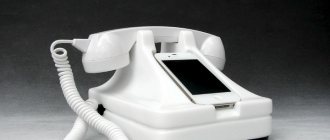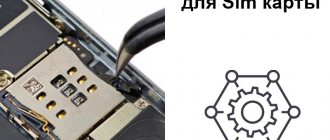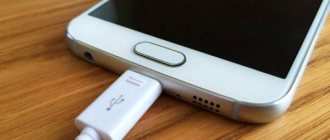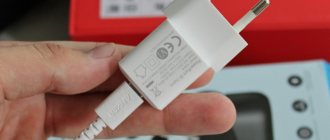09.05.2021
Do you need to know how to charge your phone correctly? At first glance, there is nothing to know. I inserted the cord into the phone, plugged it into the socket and you're done! But over time, the user notices that the phone has to be charged more often. This problem appears especially quickly on phones running Android. The battery on the iPhone lasts longer, but not every user can replace it themselves. Plus the battery itself will cost several times more.
The problem that the phone discharges faster over time is due to the fact that each battery model has a certain number of charge/discharge cycles. The cycles are affected by how many times energy was supplied through charging to the phone and how much you keep the charge of your smartphone at an average value.
That is, if you charge your phone not haphazardly, but correctly, you can increase the battery life. However, it is impossible to increase the battery life of your phone beyond that stated by the manufacturer.
For both iOS and Android devices, it is important to understand how to properly charge your phone so that the battery lasts longer. Let's figure out how to charge your phone correctly if:
- you bought a new phone;
- replaced the battery on the phone;
- The phone has been in use for some time now.
We’ll also tell you more about the phone’s charging/discharging cycles and how you can check them. Let's reveal the truth about Chinese charger manufacturers. Well, according to tradition, at the end of the article you will find advice from experts of the 100 Friends brand .
How to properly charge your phone if it's new?
When a person buys a new gadget for himself in the form of a smartphone, then almost the main thing he needs to know is how to charge the phone correctly the first time. After all, if you buy it and do not understand what capacity and type of element is installed, then there is a chance that the user will charge the new device incorrectly, which will result in severe wear and tear.
There are 2 types of batteries supplied from the factory:
- Lithium-ion;
- Lithium polymer.
They have no differences in everyday use, therefore, there is no need to worry about changing the principle of operation or anything else. If a person switches from a Li-Pol battery to Li-Ion, then nothing will change. And you don’t need to think about how to properly charge your phone with each of these types of batteries.
But sometimes people think that they need to charge gadgets until the “100%” mark appears next to the battery and discharge until the phone turns off completely
In some cases this is required, and someday it can even harm the battery in a smartphone. Therefore, you need to figure out how to properly charge a new smartphone.
Standard scenario
A person buys a smartphone, and then can simply charge it fully and use it as usual. No need to do any calibrations or anything else. That is, before sale, everything was done from the factory with the component installed in the smartphone. In view of this, the buyer receives a gadget completely ready for normal use.
The reason for the lack of calibration is that this has already been done at the factory. They not only assemble the devices, but also test the components to catch any problems early and fix them to avoid future problems. The factory uses recharge cycles for the battery, so you don’t have to think about how to properly charge your phone.
The calibration process itself goes like this:
- A man inserts an element into a smartphone;
- Charges the battery to maximum;
- Discharges it to 0%;
- Repeats several times for calibration to occur.
The important thing is that new smartphone models are delivered from the factory already calibrated. In view of this, deep discharge will not be allowed, which adversely affects the battery capacity and its operation.
Consequently, a person, having bought a mobile phone, can use it without problems - he has a working device with a calibrated battery. That is, you do not need to calibrate yourself. In this case, it will do more harm than good.
How to properly charge a phone with a new/replaced battery?
The case when the battery in a smartphone is replaced is different from buying a new phone. Here you need to use other knowledge in order to understand how to properly charge a phone with a new component.
The same applies to the course of action when a person independently changes the battery - it is not always and not everywhere calibrated.
The fact is that when assembling a smartphone at a factory, workers at the same time calibrate all components for further ease of use by the buyer. And those who collect nutritional elements for smartphones simply manufacture them. It is concluded that a person receives only a nutritional element.
The calibration process is no different from what is carried out at the factory. A person only needs to install a new battery and then check whether it is charged at all. When starting the device, it is important to pay attention to the charge indicator - you must wait until the very end. Then you should charge the gadget, and then perform a couple of recharge cycles.
It is also important to prevent deep discharge - this happens with devices and components that lie discharged in warehouses for a long time.
Therefore, during the purchase, in front of the seller, insert the battery into the phone and try to turn it on immediately. If the phone does not react at all, then the battery has been discharged for a long time. It's not worth buying such a battery.
Types of batteries in smartphones
Smartphones are supplied with lithium-ion or polymer batteries. The first type replaced nickel-metal hydride and nickel-cadmium batteries.
Despite many positive characteristics, lithium-ion batteries have a number of disadvantages. The metal was rarely used in its pure form. It was replaced with different alloys.
Lithium-polymer power supplies operate on the principle of polymer-to-conductor transition. Electrolyte ions increase conductivity. The following types of batteries are currently available:
- with polymer fillers enriched with lithium salts;
- with dry polymer fillers;
- with porous matrices equipped with lithium-based compounds.
How to properly charge your phone while in use?
When a person has already been using a smartphone for a long time - a couple of months have already passed since purchase - then you need to know several important points regarding charging the device. This, in fact, will allow people to extend the “life” of the battery, be it iPhone or Android, at least a little bit.
The first and most important thing is to not allow the battery to be deeply discharged. This phenomenon greatly reduces the maximum battery capacity.
That is, a person was using a gadget, after which the device was discharged, and then the user did not rush to charge it - this causes the loss of precious hundreds of mAh units in the battery.
There is also advice from experts regarding the recommended charge level. The fact is that if a person charges the device, starting from 0 to 10% and up to 100%, then the wear and tear over a year of operation will amaze the user. This will be as much as 30% of the maximum capacity declared by the manufacturer. If you keep the charge from 40 to 80%, then wear will decrease to 10% per year.
In general, a person does not need to worry about any special principles for charging a smartphone - one can use the gadget as the user is accustomed to without any problems. This is charging/discharging in free time and “delaying” the charge level at an average value.
Now you know how to charge your phone correctly. There is nothing supernatural about this. Let's summarize the main points:
- The new phone does not need to be calibrated - it has already been fully discharged and charged at the factory. User calibration will only do harm.
- Calibrate the charging of the smartphone on the replaced battery - here it is worth discharging to zero and charging the battery to 100% a couple of times.
- Do not buy a battery that is completely discharged in the store - we check it on the spot.
- Keeping your smartphone's charge in the range from 40% to 80% reduces battery wear.
- Do not keep your phone completely discharged for a long time.
Real example: we have a Nokia phone of the “log” model. That is, a push-button telephone with a small, non-color screen. They discharged the battery and put it to rest for a year. After a year, the battery was charged to 100%. As a result, the charge barely lasts for half a day if the phone is just left alone.
Now let's learn more about cycles and Chinese chargers.
What is not allowed when charging a phone battery?
Any type of battery is sensitive to a drop or rise in temperature, mechanical stress, or the use of non-original chargers.
With li-ion battery
Frequent complete discharge can damage a power source of this type. It is not recommended to restore the charge completely or allow overcharging. Frequent calibration is also dangerous for such batteries.
Battery performance deteriorates when overcooled or overheated. The charge is maintained at 80-90%. Android phone battery training is carried out once every six months.
With li-pol battery
Products of this type are sensitive to the following influences:
- complete loss of charge;
- frequent training and calibration;
- constantly being connected to the network;
- changes in ambient temperatures.
Just like for lithium-ion batteries, maintaining the charge at a level of 20-90% is optimal.
With ni-mh battery
Older battery models cannot be partially charged. This leads to a gradual decrease in capacity. It is not recommended to store a phone equipped with such elements while charged. Heat and mechanical stress damage the battery faster than more modern products. Regular full discharging/charging helps maintain capacity. Training is carried out once every 2-3 months.
When buying a phone with any power source, you need to understand that the device will not last forever. Battery aging and failure are natural processes. Proper use of the communication device helps slow them down.
How many charge/discharge cycles does a standard phone battery have on average?
The service life of a battery is determined not only by the method of charging it and the principles that a person adheres to, but also by the stated guaranteed number of recharge cycles. If the battery has crossed the threshold of this number, then we can say that problems will begin in the near future. This could be a “glitch” with the charge indicator, increased wear, etc.
Technical documentation rarely writes about how many charge/discharge cycles a component is designed for. But we can say with confidence that this parameter has a value of several hundred. Laptops and other devices have the same thing, but they also have a larger battery, which is why the “life” of their batteries is longer.
As a rule, modern batteries can withstand a fairly large number of recharge cycles. This parameter ranges from 500 to 1000. But it all depends on whether the person knows how to charge the phone correctly. After all, if you do this ineptly, then the battery will not live up to the “warranty number” - the capacity will drop to a very low parameter value.
What is important to know about recharge cycles?
The most important thing is to understand how recharge cycles are read. If you charge from 0 to 100%, the system will count one cycle. And if 2 times from 40% to 80% - again, only 1, not 2. This will seem a little strange to users who do not know about this topic, so we will have to clarify this nuance.
The fact is that the system counts cycles based on the fact that a certain amount of mAh has been charged and discharged - depending on the capacity. In view of this, a person may periodically charge the device not completely, which is why the cycles will accumulate for a long time. Thus, it would seem that one can achieve a very long life.
But there is a small catch here - if a person often connects and disconnects the charger, then there is a chance of problems with the power controller. This problem can be easily solved - just carefully connect the charging cable to the device and do not pull it out sharply.
Do I need to completely discharge and charge the battery several times after purchase?
Modern smartphones are most often equipped with lithium-ion and lithium-polymer batteries. A feature of these batteries is the absence of a memory effect, which means they do not require pumping to reach the maximum capacity level. This means that the answer to the question of whether it is necessary to completely discharge a new smartphone battery can be answered no. This type of smartphone battery can be immediately connected to charging and put into operation.
New phones are no longer being released with nickel-cadmium or nickel-metal hydride batteries. True, this does not mean at all that you cannot purchase your favorite type of battery for your own phone. In this case, you need to completely discharge the battery, for the reason that they have a memory effect, and if you do not charge and discharge the batteries of a new smartphone, they will not be able to reach the maximum capacity level.
Is it possible to find out how many charging cycles a smartphone battery has and how to do it?
Some users worry that they don't know which nutrient is used up. After all, the more recharge cycles that have passed, the closer the “death” of the battery is. Thus, knowing the approximate number of recharge cycles, you can determine how soon you need to change the battery or you can wait.
Parameters can be set in the technical documentation included in the kit, but there is only an approximate value for the maximum number of recharge cycles. But a person needs to know how much battery life has already been used up after use. Therefore, simply looking at the required item in the documentation is not an option.
But there is still a way out of the situation. This is downloading special software from the Internet that collects information about the battery and provides it to the user. There are many options, but what they all have in common is that they collect the same information - battery wear, number of recharge cycles and battery charge/discharge status.
However, there is a lot of “junk” software, which means you can only waste time downloading and installing, and there will be no information (how many battery charging cycles). Therefore, it is recommended to choose the most popular options for battery information programs. The best of these are described below.
Programs for checking battery on Android
AccuBattery will be able to analyze the battery status and display the basic information needed for the Android device user. This will allow people to know about health (the difference between the maximum capacity from the factory and at the moment), session data (battery usage), as well as charging speed without any problems.
Kaspersky Battery Life is a similar utility. But it will better allow you to track programs that “eat up” most of the charge, which leads to rapid discharge. Also, there is an estimate of the remaining time on charge. A bonus is a menu in which the program displays information about the remaining time until fully charged.
Battery Care Pro is the best option out of these three. It will allow you to monitor battery voltage, temperature, charge level, “health”, as well as type (Li-Pol, Li-Ion). However, this program is software that requires you to purchase it in order to use it. Therefore, if you need such software, you will have to pay a little money (85 rubles) to Google Play.
There are a lot of different programs for checking the battery in the Android app store, but the ones described are the best options. Therefore, if you come across programs on Google Play that are not listed here, there is no need to rush to install them. Perhaps they do not provide any benefit and will be worse than the applications presented here.
Checking charge cycles on iOS devices
The question of how to find out how many charge cycles an iOS smartphone has has a simple answer. Unlike Android, there is a built-in utility right in the settings menu. It is possible to use it without connecting to the Internet and downloading additional software. Therefore, you can easily find out how many charging cycles your iPhone has already completed.
In order for everything to go well and a person to find out how much “health” his battery has, you can go to the “Battery” item. There will be an additional line that you need to click on. This is “Battery Status”. On iPhone 6 this will be a beta version, and on older models - 6s and higher, there is a full-fledged utility that has been tested.
By going to this section, a person will be able to see the capacity of his battery as a percentage. The number of cycles worked is not shown, but if you rely on real research, you can simply find out about the fact that the guaranteed number of recharges has been completely used up. When the capacity drops to 80%, the battery needs to be changed, the number of cycles is high.
But it is possible to find out the exact quantity. Analytics collection will be required. If this function is enabled, in the “Analytics Data” section you will only have to find the line “log-aggregated-2021-01-21-xxxxxx.ips” (it is important to insert a recent date), select the text and paste it into the text editor. Under the line with “BatteryCycleCount” there will be the desired value between “”.
How to charge a battery from a phone without the device itself
It is possible to directly charge the phone's battery, which can be useful if you don't have a standard charger at hand. This may be necessary in emergency situations. Experts give some extreme advice on how you can extend the life of your battery for some time:
- Wrap the battery with tape. In some cases, this method allows a dead battery to work.
- Place a heated object on the battery.
- Beat the battery against a hard surface until visible deformation is obtained.
The performance of a smartphone depends on the performance of the battery, so you should be careful about the issue of proper battery charging. You can see and learn how to do this again by watching the proposed video.
So we answered the question of how to properly charge your phone
After reading this material, a person was able to understand how to properly charge a phone and what is required for this. This is the most basic material that should be enough for a person to eliminate charging problems and extend the “life” of the battery. This article will be especially useful for those who need to understand how to properly charge a phone after purchase.
On top of that, a person now understands how to charge the phone’s battery the first time after replacement at a service center or with his own hands. Therefore, even with repairs, you can restore your former autonomy and use your smartphone the same way as before.
And most importantly, you need to choose the right accessories in the form of power supplies, as well as charging cables. Recommendations are given in the article, and in our online store catalog you can find chargers and batteries at very competitive prices with fast delivery.
All products have passed the necessary quality control. Also, all products have a warranty. If you have problems with your order, you can ask the online consultant for help. He is not a robot, but a living person. So don't be afraid of bots)))
Wireless charger
Wireless charging is based on the principle of electromagnetic induction. This technology is described in the Qi standard developed by the Wireless Power Consortium, WPC (Wireless Power Consortium). With its help, energy can be transferred over a distance not exceeding 4 cm.
To determine whether your smartphone can be charged in this way, just go to the website of the technology developers. There is a Products tab with a list of all models registered as supporting wireless charging mode.
To make the search process easier, just enter the manufacturer's name in the search bar.
In order for a phone to receive transmitted energy, it must have a special receiver called a Qi receiver. It is enough to install the gadget on the platform to start charging. Therefore, the rear walls of the case in such models are made of ceramics or glass.
Using wireless charging is also safe, but your phone will take longer to charge than using a wire!











